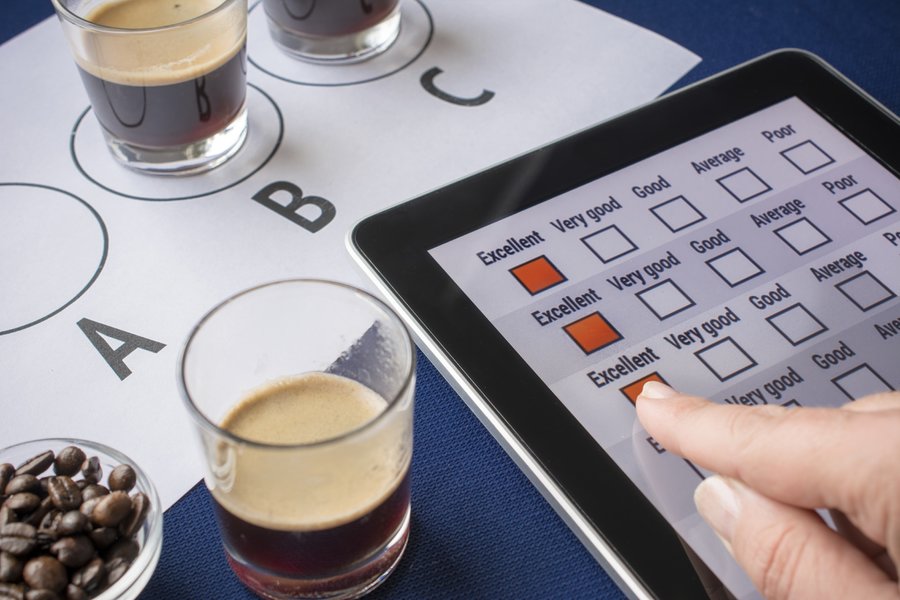ISO 11036 Descriptive Analysis of Texture in Food Products
The ISO 11036 standard is a comprehensive tool designed to evaluate and describe the texture of food products. This sensory method allows for detailed qualitative analysis, which can be critical for quality control, product development, and compliance with international standards.
Texture plays a significant role in the consumer experience and satisfaction. By using this technique, manufacturers can ensure that their products meet specific customer expectations, whether it is the crunchiness of potato chips or the smoothness of ice cream. This service provides an unbiased, reproducible method to assess texture descriptors such as hardness, springiness, gumminess, and adhesiveness.
The process involves experienced sensory analysts who carefully evaluate samples according to a predefined set of criteria. This approach ensures that the results are consistent with industry expectations and international standards. The test is often used during product development phases to identify areas for improvement or optimization before launching a new product into the market.
Compliance with ISO 11036 can be advantageous for businesses, as it demonstrates commitment to quality assurance and adherence to recognized testing protocols. It also provides a common language that sensory analysts and food scientists can use to communicate findings accurately across different regions and cultures.
The service typically begins by selecting appropriate reference materials and establishing baseline descriptors based on the product type. Specimens are then prepared according to specific guidelines, ensuring they represent the intended texture characteristics. Analysts will conduct a series of descriptive analysis sessions, where each sample is evaluated for its sensory properties using standardized language and scales.
Instrumentation may include mechanical testers capable of measuring hardness or adhesiveness under controlled conditions. However, the primary reliance in this method is on human senses—taste, touch, sight, smell, and hearing—to provide comprehensive descriptions.
| Parameter | Description |
|---|---|
| Hardness | The resistance to deformation or penetration by a mechanical probe. Often associated with crispness in snacks like potato chips. |
| Springiness | Rebound after indentation; related to bounce-back quality seen in biscuits or cookies. |
| Gumminess | The degree of resistance during chewing, influenced by the viscosity and elasticity within a food product like gum or chewy candies. |
| Adhesiveness | Stickiness between pieces; common in products like caramel or nougat. |
The results of these evaluations are compiled into detailed reports that outline the texture descriptors and their relative scores. These reports serve as valuable tools for quality assurance teams, R&D engineers, and procurement officers alike, providing actionable insights to enhance product performance.
In summary, ISO 11036 ensures consistency in descriptive analysis across various food products by offering a standardized approach. This service is essential for maintaining high standards of food quality and consumer satisfaction while ensuring compliance with international norms.
Scope and Methodology
The scope of ISO 11036 Descriptive Analysis encompasses the evaluation of textural properties in a wide array of solid, semi-solid, or liquid food products. This includes but is not limited to snacks, baked goods, dairy items, meats, and confectionery.
- Evaluation of hardness
- Assessment of springiness
- Determination of gumminess
- Measurement of adhesiveness
The methodology involves selecting appropriate reference materials that serve as benchmarks for comparison. Specimens are prepared under defined conditions to ensure they reflect the true texture characteristics accurately. Analysts then conduct a series of descriptive analysis sessions, recording detailed observations using standardized language and scales.
For mechanical testing, instruments may be used to measure hardness or adhesiveness, though these methods are supplementary to the primary reliance on human senses for evaluating texture. The process concludes with compilation into comprehensive reports detailing the findings and scores for each parameter evaluated.
Why Choose This Test
Selecting ISO 11036 Descriptive Analysis offers several compelling advantages:
- Comprehensive Evaluation: Provides a thorough assessment of multiple textural properties, ensuring no aspect is overlooked.
- Standardized Approach: Ensures consistency in methodology and results across different locations and cultures.
- Quality Assurance: Helps maintain high standards of food quality and consumer satisfaction.
- Regulatory Compliance: Demonstrates commitment to meeting international norms and regulations.
- R&D Support: Offers valuable insights for product development and optimization.
- Consumer Trust: Enhances brand reputation by delivering products that meet or exceed customer expectations.
The service is particularly beneficial for quality managers, compliance officers, R&D engineers, and procurement professionals who need reliable, consistent texture analysis to guide their decision-making processes. By choosing this test, businesses can ensure they are meeting the highest standards of food safety and quality.
International Acceptance and Recognition
The ISO 11036 Descriptive Analysis has achieved widespread recognition in the food industry, with numerous international standards bodies endorsing it. This includes organizations such as:
- ISO (International Organization for Standardization)
- ASTM International
- EN (European Norms)
- IEC (International Electrotechnical Commission)
The standard's acceptance is not limited to Europe; it has also been adopted in North America, Asia, and other regions. The global adoption reflects the growing importance of sensory analysis in food product development and quality assurance.
Many countries have incorporated ISO 11036 into their national standards or guidelines for food safety and quality control. This widespread recognition underscores its reliability and relevance across diverse markets and industries.





